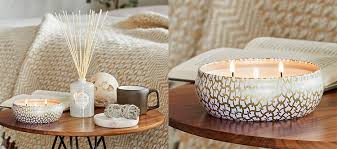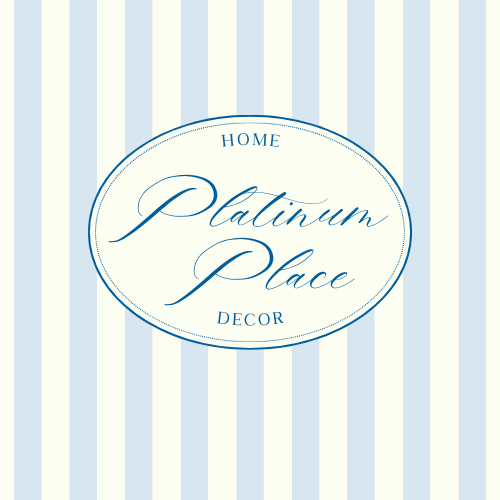Scented Candles vs. Essential Oil Diffusers: Which Is Better for Your Home?
GENERAL
Kelley Busbice
8/25/20254 min read


Scented Candles vs. Essential Oil Diffusers: Which Is Better for Your Home?
Transforming your home into a warm, inviting space often begins with fragrance. Scented candles and essential oil diffusers are two of the most popular choices for adding delightful aromas, whether you’re setting a cozy mood for a quiet evening or enhancing a festive gathering like a Valentine’s Day dinner. In 2025, with home decor trends leaning toward sustainability and wellness, choosing between these options can shape your space’s ambiance and functionality. This article will compare scented candles and essential oil diffusers, analyzing their cost-effectiveness, scent strength, longevity, and top-selling scents. We’ll help you decide which fits your lifestyle and home decor needs, whether you’re refreshing a living room or styling an outdoor patio.
What Are Scented Candles and Essential Oil Diffusers?
Scented candles are made from wax—typically paraffin, soy, or beeswax—infused with fragrance oils. When lit, they release scent and a warm glow, creating an instant cozy atmosphere ideal for dining rooms or intimate settings. Essential oil diffusers, often ultrasonic models, disperse a fine mist of water and pure essential oils into the air, offering a flame-free, wellness-focused fragrance experience. Both elevate home decor, but their differences in cost, scent delivery, and durability make the choice a matter of preference and practicality. Let’s explore the key factors to guide your decision.
Cost-Effectiveness: Candles vs. Diffusers
Cost-effectiveness hinges on both initial and ongoing expenses. Scented candles vary widely in price, from $1 budget options at retailers like Dollar Tree to $50+ for luxury brands like Diptyque. A standard 8-ounce candle, priced at $15-25, burns for 40-50 hours. If used daily for 4 hours, you’d need roughly 30 candles a year, costing $450-750. Add minor costs like matches or lighters ($2-5/year) and wax cleanup supplies ($5-10), and the total rises. Over five years, maintaining a candle-lit ambiance could cost $2250-3750.
Essential oil diffusers require a higher upfront investment—$20-50 for a quality ultrasonic model—but their running costs are lower. A 15ml bottle of essential oil ($8-15) contains about 250 drops, with 5-10 drops per 6-8 hour session. One bottle yields 25-50 sessions, or 150-400 hours of use, depending on settings like interval mode. For daily 4-hour use, you’d spend $50-100 annually on oils, plus the one-time diffuser purchase. Over five years, a $40 diffuser plus $250-500 in oils totals $290-540, making diffusers far more economical long-term.
Verdict: Diffusers are more cost-effective over time due to reusable hardware and affordable oils, ideal for budget-conscious decorators seeking lasting value.
Scent Sensation: Strength and Quality
Scent strength and quality shape how each option transforms your space. Scented candles deliver a bold, immediate fragrance burst when lit, quickly filling smaller rooms like bedrooms or dining areas. The flame’s warmth enhances the cozy factor, perfect for creating ambiance during a romantic dinner. However, scent intensity can fade as the candle burns, mixing with unscented wax, and cheaper paraffin candles may introduce a smoky undertone that muddles the fragrance. Higher-quality soy or beeswax candles ($20-40) burn cleaner, preserving the scent’s purity.
Essential oil diffusers provide a consistent, subtle fragrance, dispersing scent steadily through mist. You can adjust intensity by adding more or fewer oil drops—5 for a gentle aroma, 10 for a bolder one. Since essential oils are plant-derived, they offer a natural, therapeutic scent free of synthetic additives, appealing to those prioritizing wellness. In larger rooms, the scent may feel less potent unless using a high-capacity diffuser (300-500ml, $30-60). Diffusers excel for steady, customizable fragrance without needing to relight.
Verdict: Candles shine for instant, strong scent in smaller spaces, while diffusers offer natural, adjustable aromas for sustained use, perfect for larger or wellness-focused areas.
Longevity: How Long Does the Scent Last?
Longevity covers both scent duration per use and the product’s lifespan. An 8-ounce candle burns for 40-50 hours, but the scent weakens toward the end as fragrance oils burn off. Once extinguished, the aroma fades quickly, requiring relighting to refresh the space. Daily use means frequent repurchasing, limiting overall longevity.
Diffusers excel in longevity. A single 6-8 hour session uses minimal oil, and interval settings can stretch a 15ml bottle to 80-100 hours or more. The diffuser itself lasts years with simple maintenance, like cleaning with vinegar every few uses. Unlike candles, diffusers maintain consistent scent potency throughout each session. Reed diffusers, a related option, provide weeks of passive fragrance but are less customizable.
Verdict: Diffusers offer superior longevity for both scent and product life, making them ideal for continuous fragrance without constant replacements, especially in busy households.
Top-Selling Scents
Based on trends from fragrance blogs and retailers, here are the top-selling scents for candles and diffusers, reflecting consumer preferences and seasonal appeal:
Scented Candles
Lavender: Soothing and versatile, perfect for bedrooms or relaxation nooks. Found in Yankee Candle ($15-30), it’s a year-round favorite.
Vanilla: Warm and inviting, ideal for cozy living rooms. Bath & Body Works versions ($20-40) are perennial hits.
Fresh Fig: Earthy with moss and lemon notes, a sophisticated choice for dining areas. Soy wax candles ($25-50) are trending.
Pumpkin Spice: A fall must-have, evoking autumn coziness. Available in budget ($10) and luxury ($50) options.
Citrus: Bright and summery, great for kitchens or warm-weather gatherings. Brands like Aromaworks ($15-25) lead this category.
Essential Oil Diffusers
Eucalyptus: Refreshing and therapeutic, popular for wellness-focused homes. Oils cost $8-15 for 15ml (e.g., Vitruvi).
Peppermint: Crisp and energizing, ideal for offices or study spaces. A 15ml bottle ($10-15) lasts months.
Lavender: A calming classic, perfect for bedrooms. Oils cost $8-12 for 15ml.
Pumpkin Spice Latte Blend: A seasonal favorite ($12-20), mimicking fall candle scents for cozy vibes.
White Lotus: Floral and woody with vanilla notes, a luxurious blend ($15-25) for elegant living rooms.
Additional Considerations for Home Decor
Candles offer unmatched ambiance with their flickering glow, making them perfect for romantic or festive settings, like a Valentine’s Day centerpiece or holiday dinner. However, they pose fire risks and potential VOC emissions from paraffin, which may concern health-conscious decorators. Soy or beeswax candles reduce these issues but cost more. Diffusers are safer, eco-friendly, and provide therapeutic benefits, such as eucalyptus for respiratory relief, but lack the visual warmth of flames. For outdoor spaces, battery-powered diffusers ($30-60) outperform candles, which struggle against wind, making them ideal for patios or balconies.
Final Thoughts
Essential oil diffusers are more cost-effective and longer-lasting, offering years of use with affordable oils compared to candles’ frequent replacements. Candles excel for bold, immediate scent and cozy ambiance, ideal for quick mood-setting in small spaces, while diffusers deliver consistent, natural aromas with wellness perks for larger areas. Top scents like lavender, vanilla, and fresh fig cater to diverse tastes, enhancing any decor style. Whether you’re styling a cozy bedroom or an outdoor patio, both options elevate your space—choose based on your priorities for cost, scent, and vibe. Which will you try?
Trends
Explore luxury home decor trends and guides.
info@platinumplacehomedecor.com
© 2025. All rights reserved.


